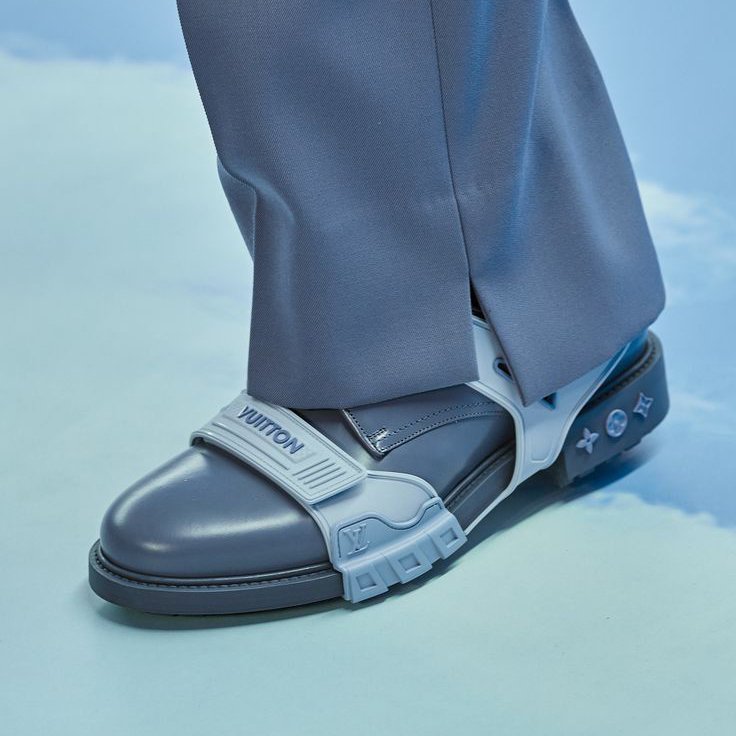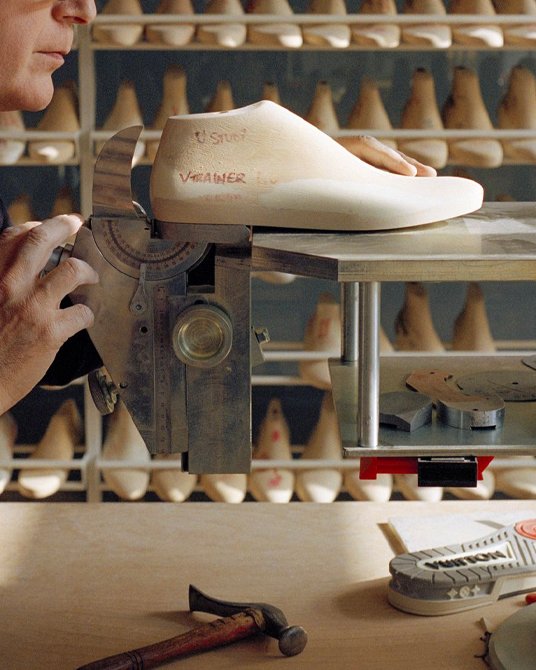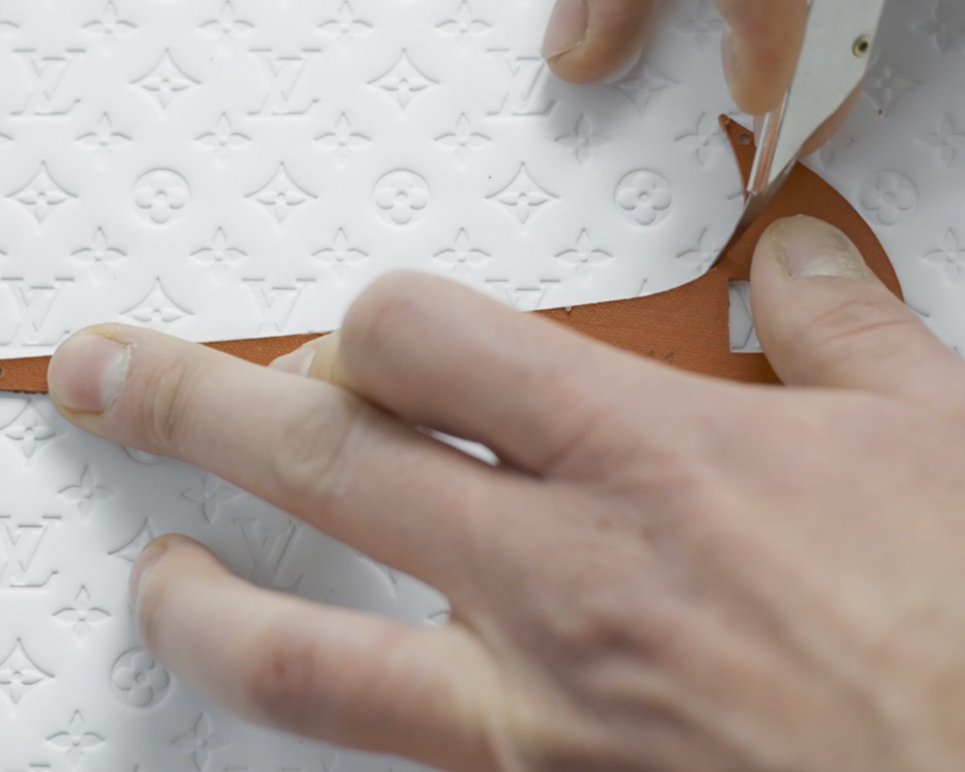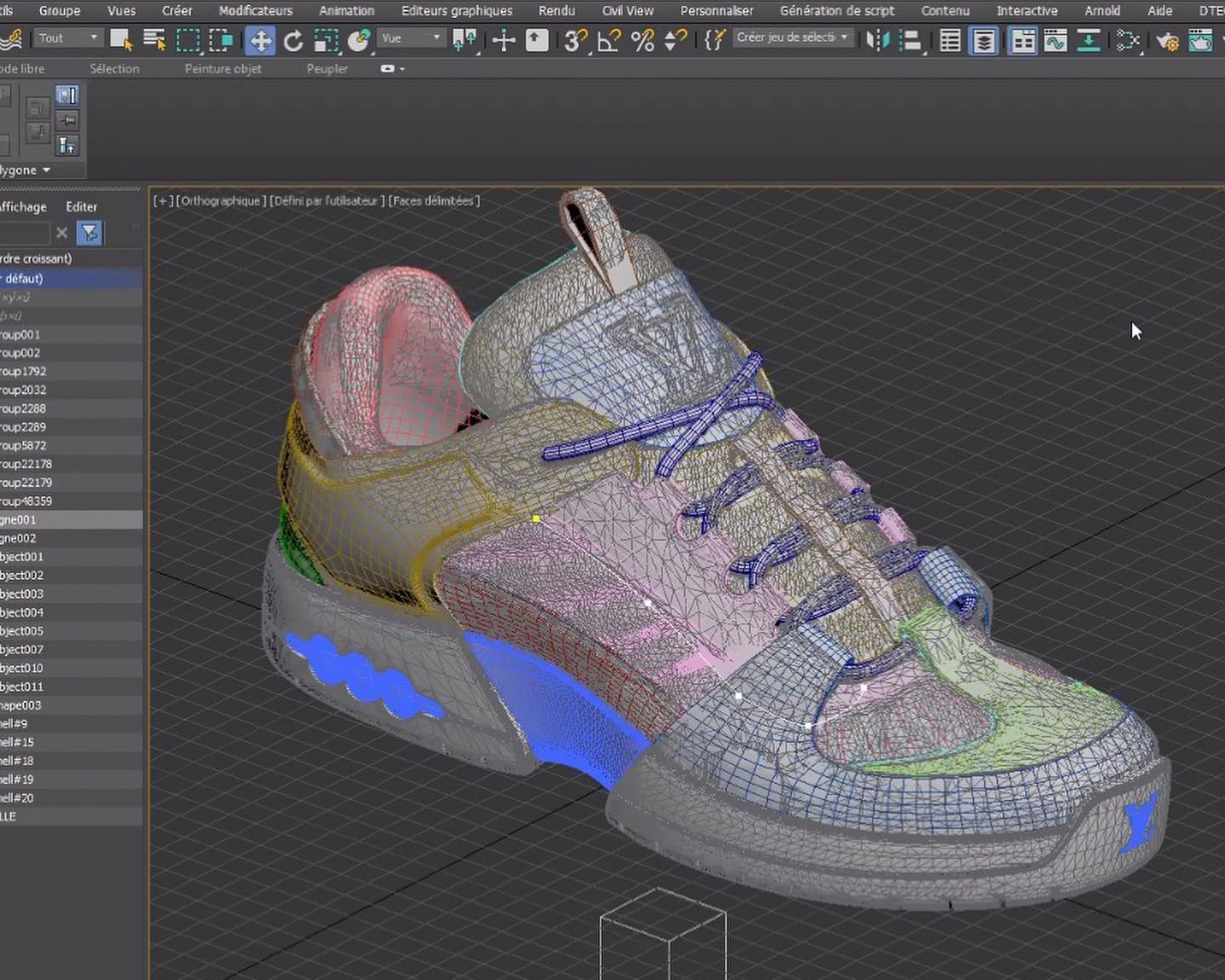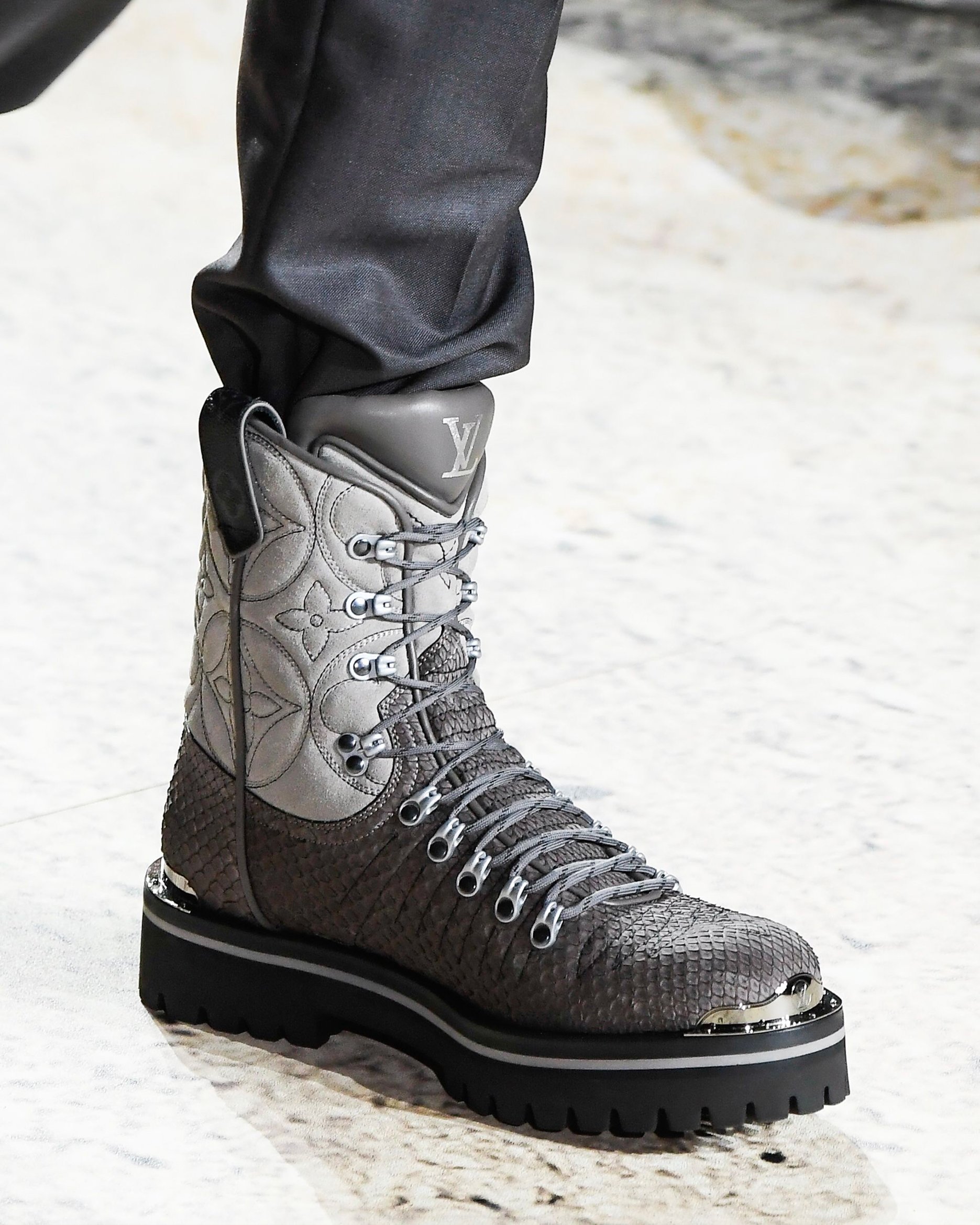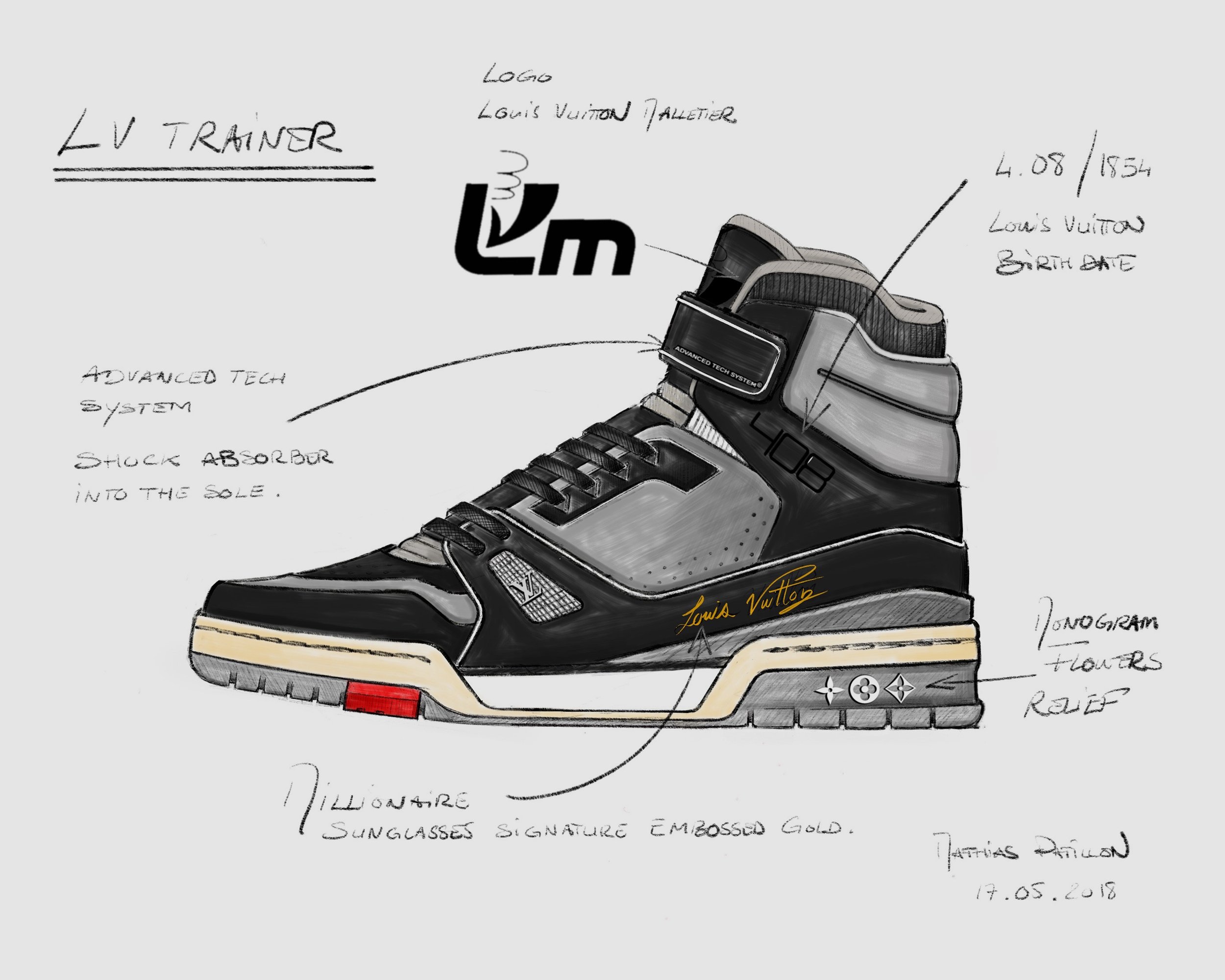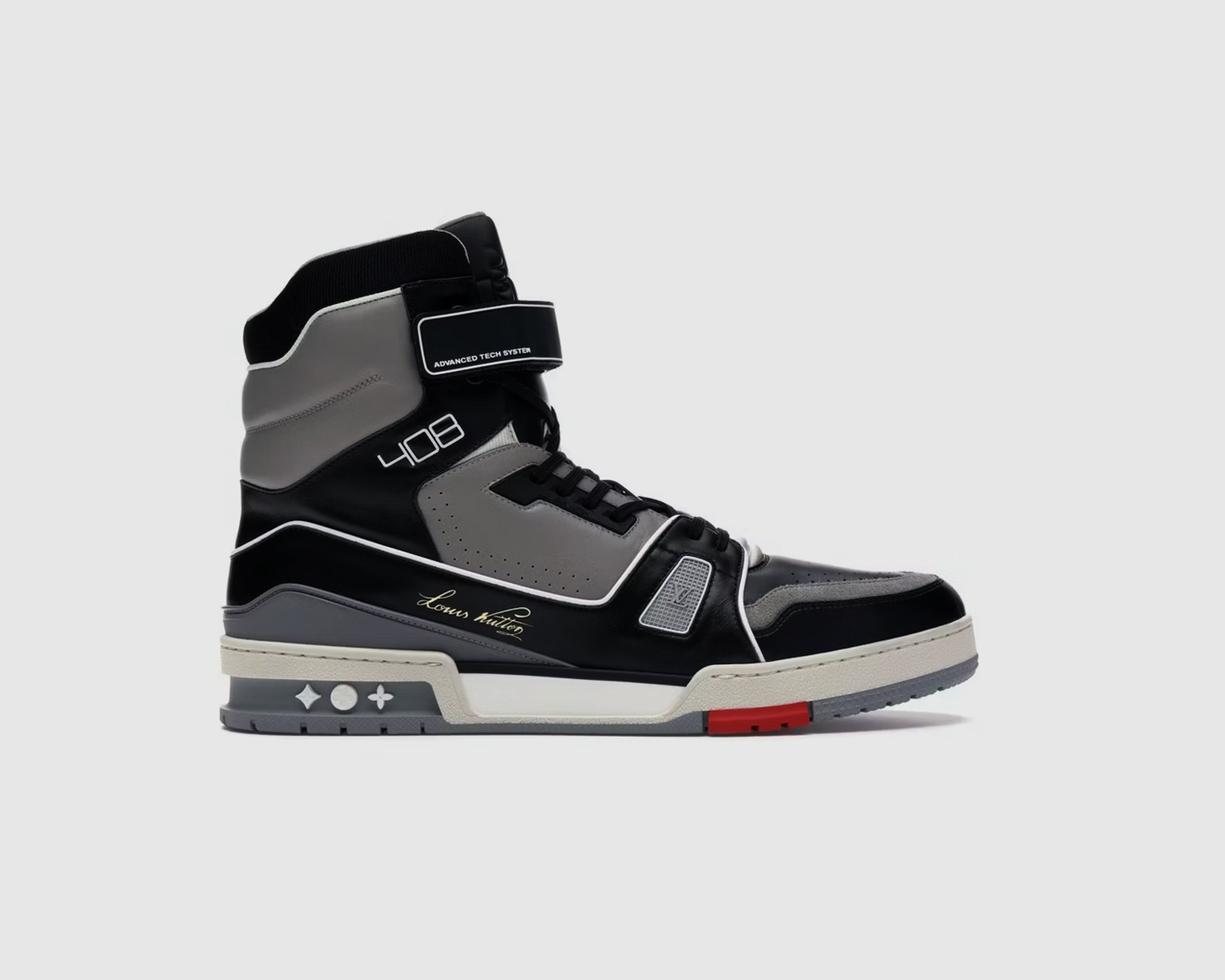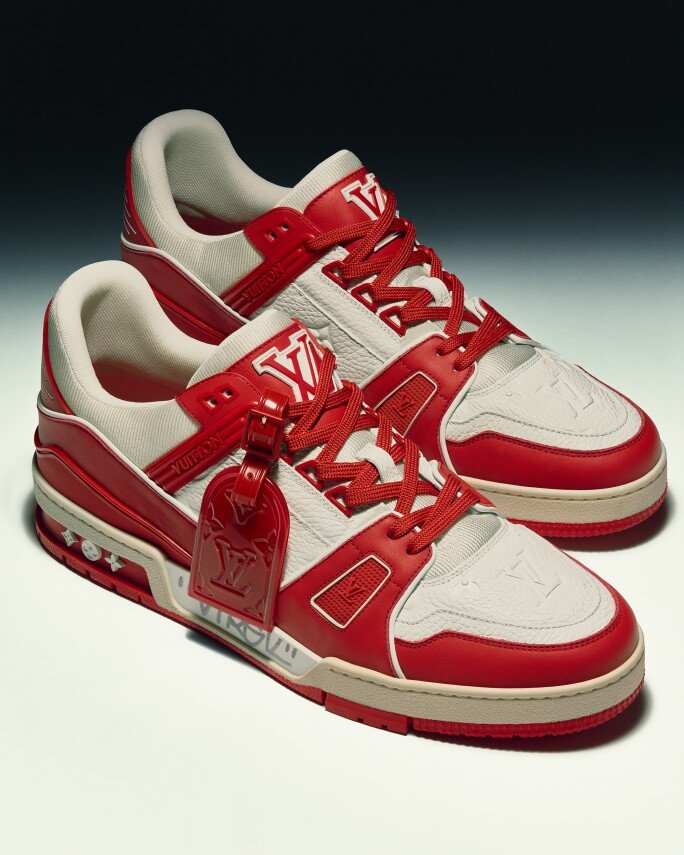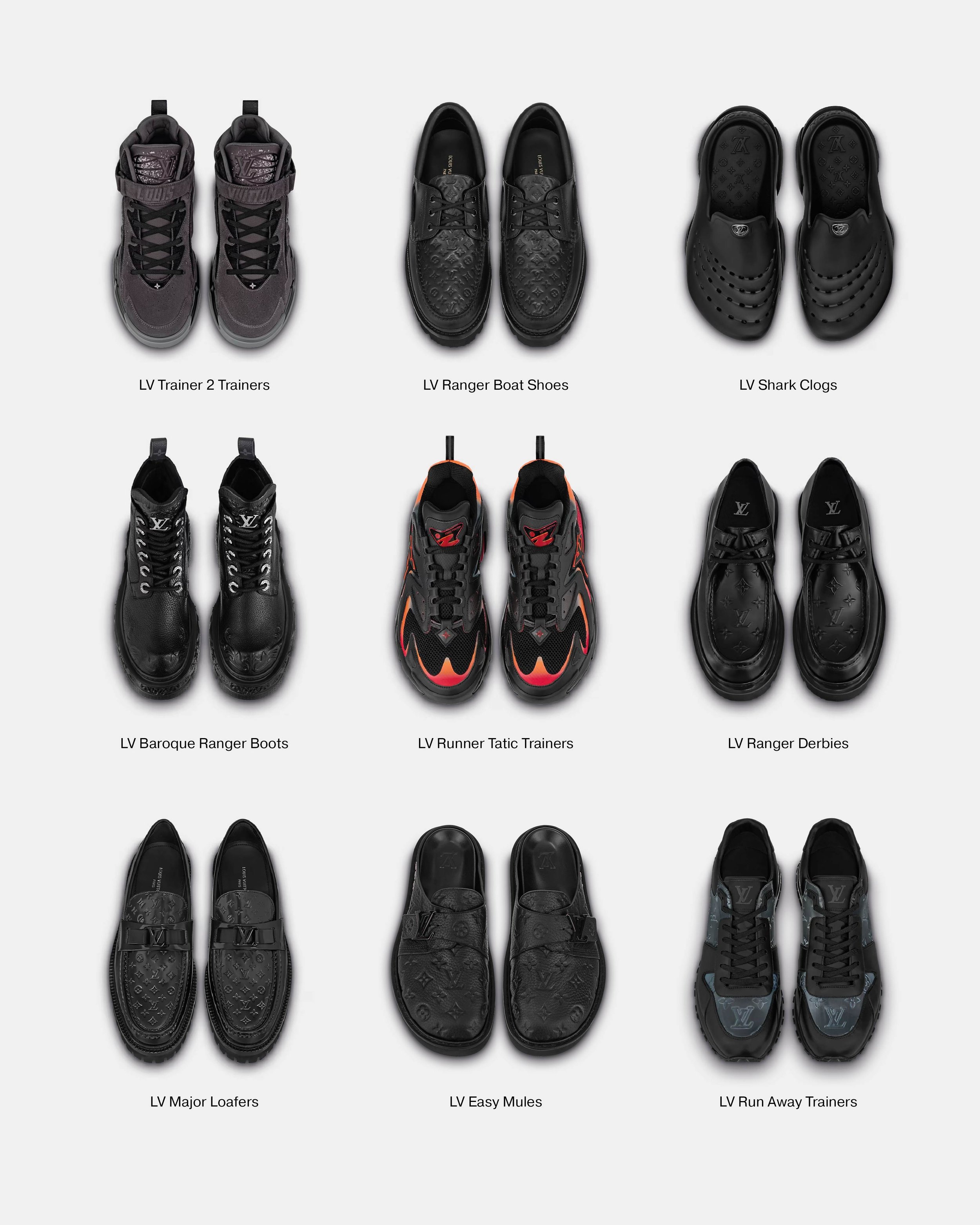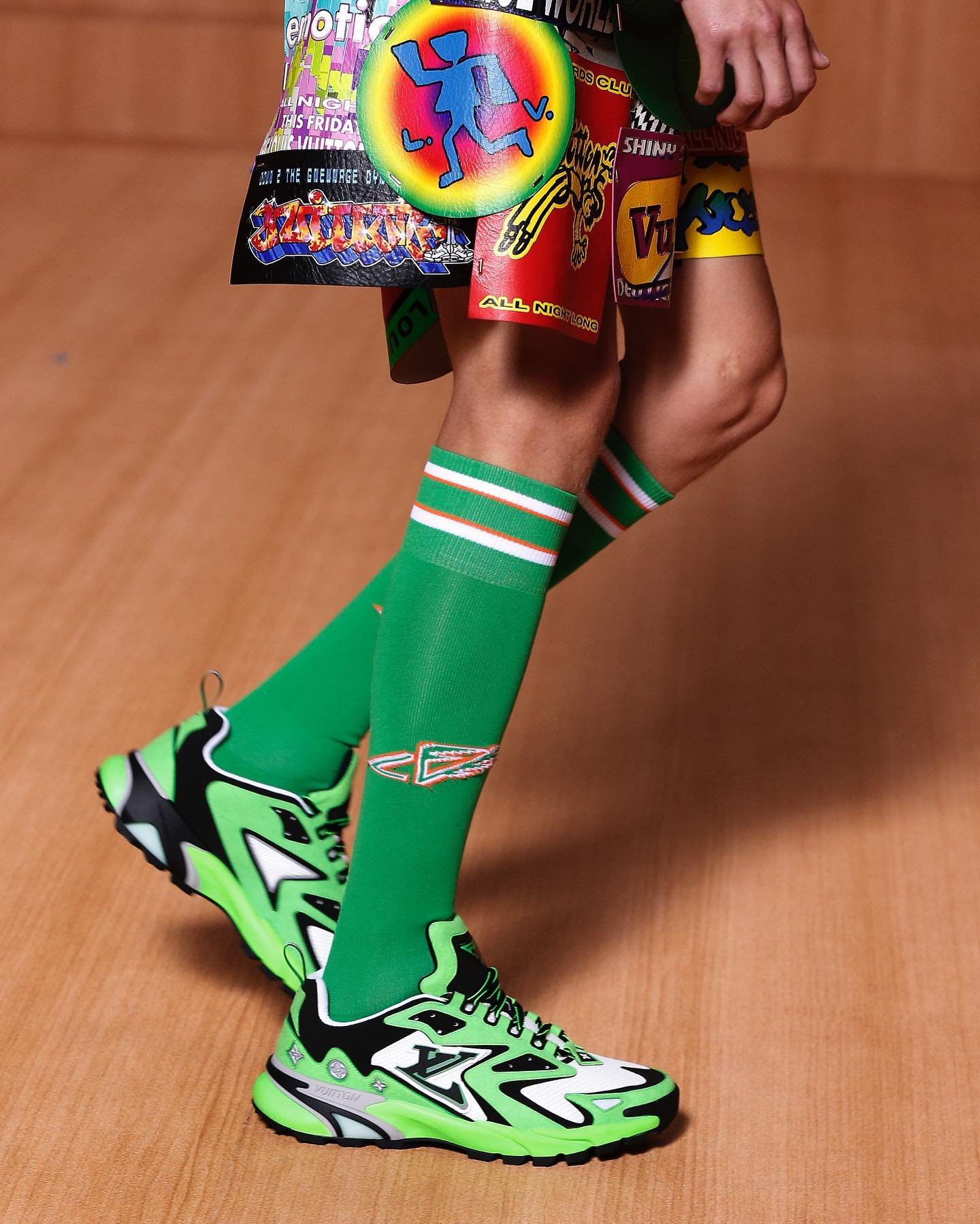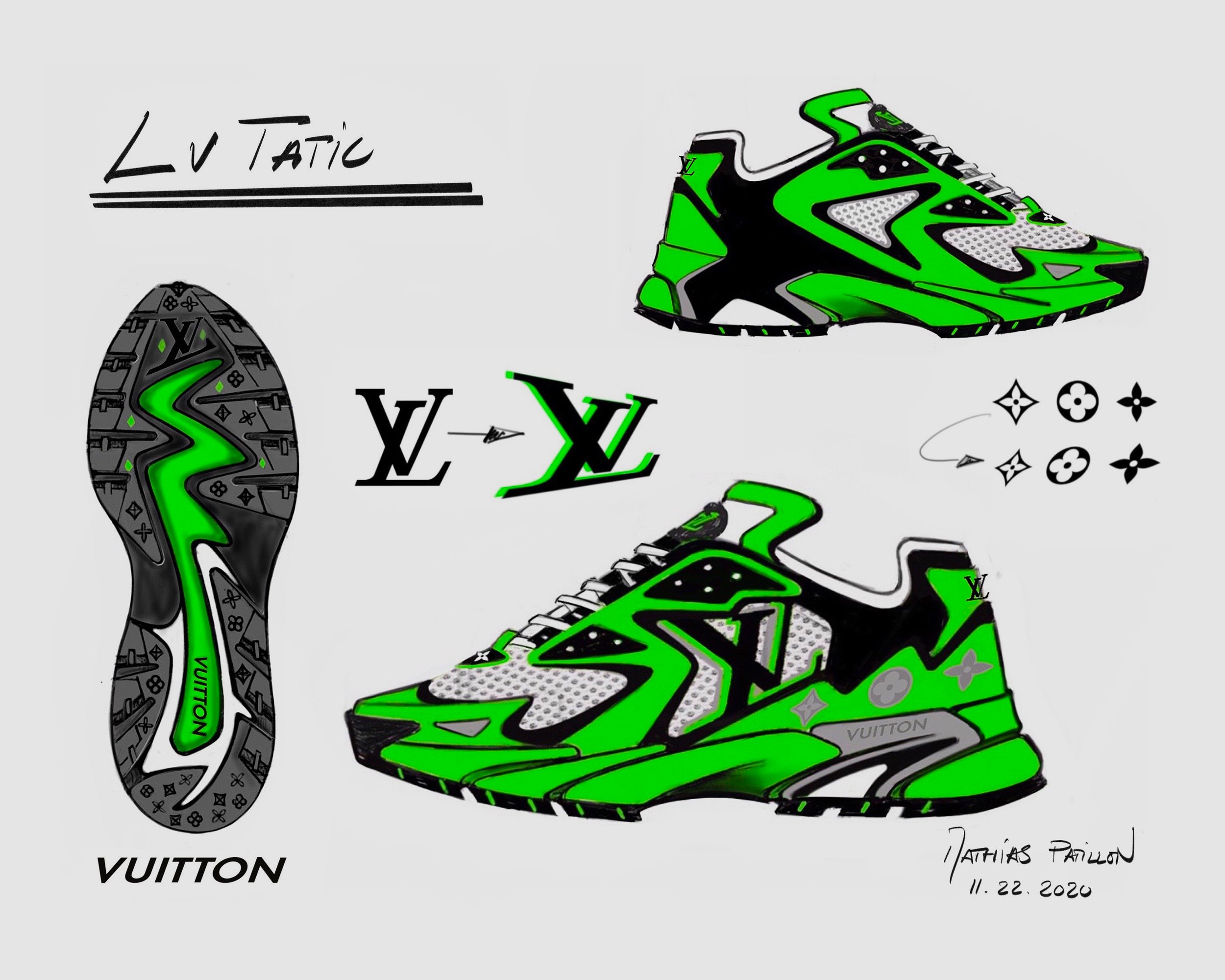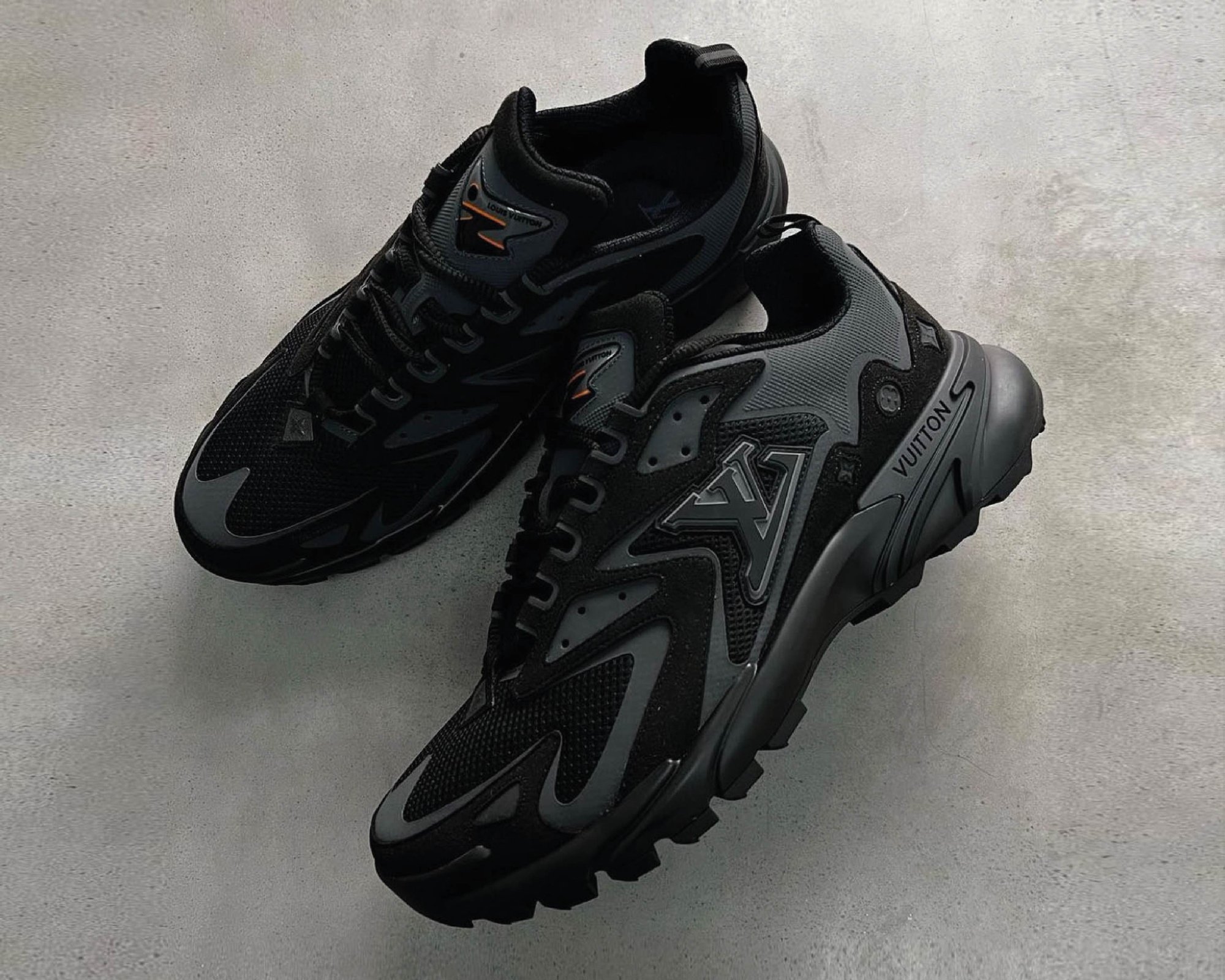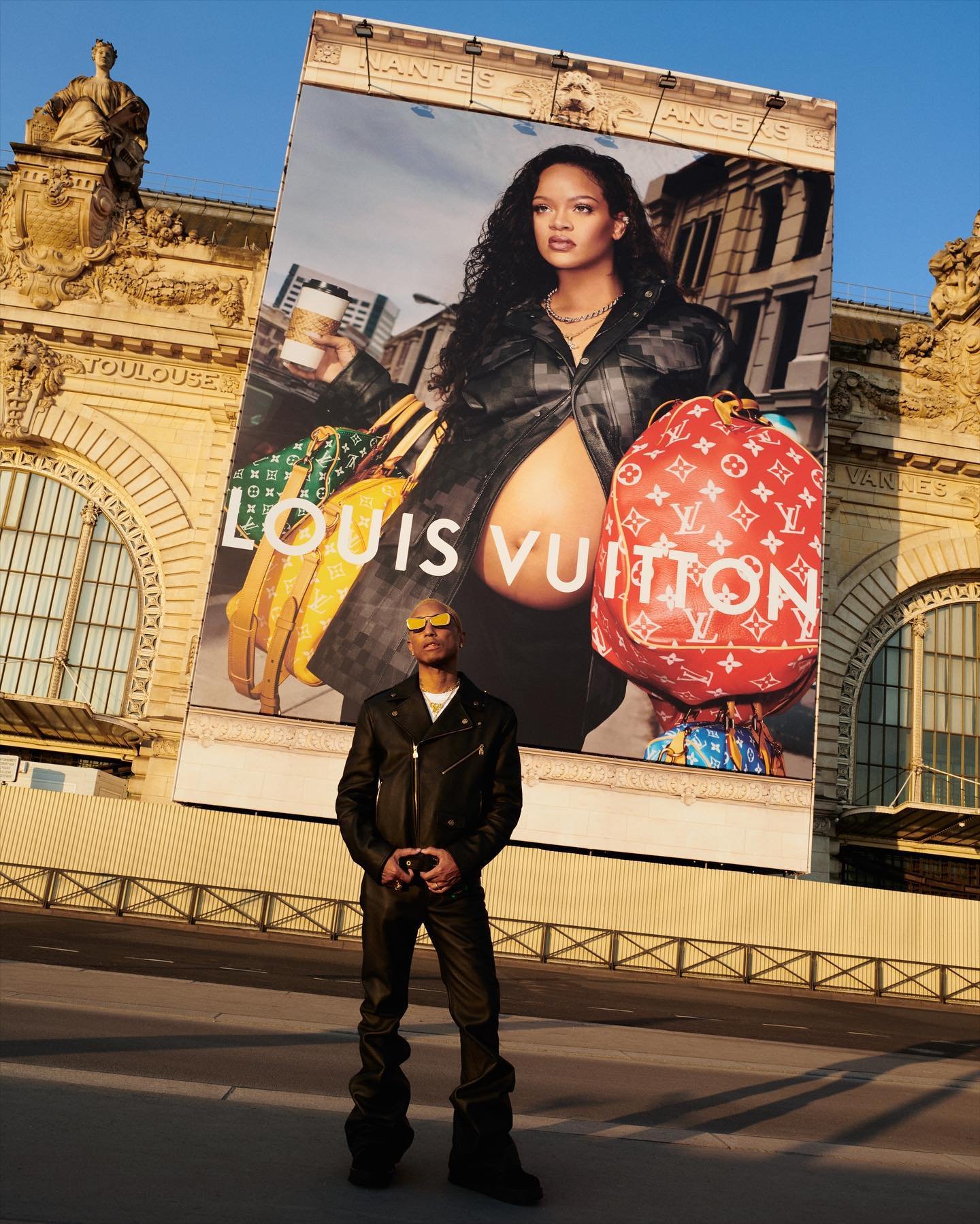The Luxury Playbook: Louis Vuitton
Pre-show Reflection With Mathias Patillon
Words: Sian Lori
Mathias Patillon, the Head of Design for Men’s Footwear at Louis Vuitton, discusses the house’s approach to design, Virgil’s legacy and the much-anticipated new chapter with Pharrell.
There’s no question in anyone’s mind that the Louis Vuitton of today is one carefully curated and carved out by Virgil Abloh. The first African American designer at the helm of a Men’s Luxury house in Paris, Virgil reshaped menswear into the cultural phenomenon it is today, as it teems with collaboration and streetwear, connects with unlikely businesses and fosters community. After his unexpected passing, the speculation of who would fill Virgil’s impossibly big shoes loomed over the industry for a long 15 months. Whilst the resulting appointment of Pharrell Williams in February of this year was no surprise to many of us, it was undeniably met with a few raised eyebrows and scepticism. Yes, it is likely that without Virgil the door for Pharrell may never have been opened, but, if you take a look into the brand’s history (alongside Pharrell’s own list of achievements), there’s fair hints to his fit before Virgil joined the game.
Established in 1854, it wasn’t until 1997 that Louis Vuitton introduced ready-to-wear. Appointing Marc Jacobs as the first Creative Director, he detoured luxury into the world of celebrity and popular culture, inciting protest among style purists with his graffiti rendition of the infamous Monogram and the casting of Jennifer Lopez in an advertising campaign. Jacobs was clever enough to capitalise on the hip-hop world's fascination with Louis Vuitton early on, collaborating with none-other than Pharrell on eyewear in 2004 and 2008, and “The Louis Vuitton Don” Kanye in 2009 on a line of high-top sneakers, at a time when streetwear and high-end fashion felt worlds apart. Even Kim Jones’ background in sportswear caused a stir amongst the fashion elite upon his appointment as Head of Menswear in 2011. Jones unified modern tailoring with tees and tracksuits and his staunch penchant for streetwear culminated in the French brand's collaboration with Supreme in 2017. From Marc to Kim, Kim to Virgil and Virgil to Pharrell, it seems that the path of each new Creative Director was artfully laid out by those who came before, and, like a well-oiled sports team, Louis Vuitton passed the baton when the time was right.
LV Nike AF1 & Lucien Clarke A-View
“When I joined, sneakers were a minute part of the brand but 7 years later it is one of the most important categories that our factories are focused upon”
Mathias Patillon
Louis Vuitton FW17 by Kim Jones
Mathias Patillon joined Louis Vuitton under Jones in 2016. At a time when Louis Vuitton “was not particularly known for shoes outside of formalwear”, Mathias came to the house to refresh and rebuild their collection. This period marked the beginning of more technical projects, with an attempt to push the house’s factories to upgrade their savoir faire towards sneakers, in particular. No longer just thinking about aesthetic, Mathias wanted the house to deliver luxury in performance and comfort too. “It took a few years to get there, to find suppliers that both believed in and could deliver the vision” - especially when maintaining production in Italy opposed to China - and, of course, the first thing Virgil wanted to do was a trainer, recalls Mathias.
LV Trainer 1 High
It was the era of Balenciaga’s ‘Triple S’, the obnoxious “Dad shoe” and the credence that the bigger the silhouette the better. However, Virgil was set upon a basketball silhouette that harked back to his youth; something he only could of dreamed of as a kid, a shoe that was artistic and technically sophisticated. This very first project became the beloved LV Trainer of today. Its elaborately constructed upper, with rich detailing and brand signatures, takes seven hours to stitch; the definition of craft and function. Funnily enough, “it really wasn’t understood at first” laughs Mathias and it wasn’t until three seasons in that it was embraced by the consumer. One denim monogram colour-way sold out within a week and the shoe was cemented as a bestseller from there on. Virgil had his fingers on the pulse and, at times, was lightyears ahead of it, and what was crucial in this approach was the emotionality of his artistic vision, full of child-like wonder and connected to all of the worlds he inhabited.
LV Trainer 1 Low
Selection of Mens Footwear from louisvuitton.com
Mathais Patillon recalls a relative amount of creative freedom under Kim Jones, in which he successfully explored and pushed the label’s technical avenues. There were plenty of shoes too: varying renditions of the Run Away runner, and so many commercial classics that equally remain best sellers today. Still, it was under Virgil he really experienced the space and appreciation of individualism. Virgil was a “curator”, much less directive than other creative directors. To those that worked with him, he truly was everything he stood for: a nurturer of talent, instilling confidence in his curated team, so that everyone knew their value. He “encouraged open discourse and discussion across all avenues to create a synergy across the brand” recalls Mathias. Of course, as a conglomerate and part of the wider LVMH, each season of Louis Vuitton was loaded with briefs and marketing directives, but Virgil’s approach remained intuitive, full of fervour and connected to what each of the team were into at that moment. These individual components and ideas would then be framed around a brief, not the other way round; “ticking the boxes without ever being stuck in one”. It was “a human approach to design”: from people, with people in mind. That way, we would “never lose the emotion of a product” explains Mathias, and that was the formula for Virgil’s magic that resulted in a unique ability to foster communities, not just customers. It led to some pretty exciting projects too, take the Louis Vuitton Nike Air Force 1 for example. Although released posthumously, they were one of Virgil’s final products, a celebration of the shoe as an objet d’art and the first time in the AF1’s 40-year history that they were produced outside of a Nike facility crafted in Louis Vuitton’s Fiesso d’Artico factory.
LV Runner Tatic
In the time between Virgil’s death and Pharrell’s appointment, it was Virgil’s team that remained, explains Mathias. “We continued working as we always had”, honouring Virgil’s ability to to bring people together and encourage talent. Delivering three collections this way, Mathias introduced another of Virgil’s outputs, the LV Runner Tatic Trainers, inspired by running shoes, at Louis Vuitton's Men's Spring-Summer 2022 Show. The most flexible and technical accessory in Louis Vuitton's growing collection, the Tatic represents something completely fresh for the house. The design’s wave-shaped sole is injected with foam for extra cushioning while the body is crafted from heat-sealed mesh and suede calf-leather and finished with playful ’90s-esque skewed LV branding and a gelly-rubber window on the tongue. Mathias also worked alongside Virgil on his final design, FW22’s LV Trainer 2.0, characterised by a padded collar and LV basketball signature on the tongue, they’re a natural progression from their original counterpart and a perfect summary of Virgil’s touch. Ultimately, Louis Vuitton is “much more open now”, especially when it comes to the capabilities of their factories, says Mathias. When he joined Louis Vuitton, “sneakers were a minute part of the brand, 7 years later it is one of the most important categories that our factories are focused upon”.
LV Runner Tatic
Louis Vuitton today is not so much defined by a specific style, but its openness, its endeavour for innovation and its belief in endless possibilities. Without Virgil Abloh at the top, perhaps Pharrell wouldn’t have climbed this ladder, but Pharrell in fact represents so much of what Virgil was inspired by. He’s a fellow multi-hyphenate with a global presence that reaches further afield than Virgil’s, he’s been the face of Chanel whilst simultaneously representing the golden age of streetwear, he’s a pioneered styles that are now catalogued as cult and he’s continually tread the line been nostalgia and progression. Virgil’s ethic and references were rooted in the 2000s - Pharrell’s very era - with his brand of design a study of the bootleg, remixing samples in the same way he did as a DJ, and his catapult to success comparable to a musician’s burst into stardom. “As a Producer, Pharrell has worked with a lot of artists, a lot of creative people”, he’s the ultimate talent coach and he’s brought that approach to the current team, explains Mathias. When it comes down to it, running the relay race of fashion at such an established house relies on teamwork, confidence and care, and Pharrell is “here to push us, to bring out the best in us and inject that confidence”.
Pharrell has tallied a whole lotta Xs, one collaboration after the next, just as Virgil did. He’s in touch with Louis Vuitton’s fundamentals and fundamental demographic and he constitutes an evolution of what it means to be a Creative Director of a major fashion house in 2023. While we don’t have the bigger picture yet - there’s only so much Mathias can share with us - there’s so much in Pharrell’s repertoire we’re hoping to see. From loud Y2K graphic prints, playful accessories and eyewear to his work with Adidas translated into LV silhouettes or, who knows, lifestyle products. There’s undoubtedly a lot of pressure on this first collection, debuting in Paris Fashion Week three days ahead of schedule on June 20th. What the first show promises is an insight into Pharrell’s wider vision for the house and a glimpse of the many upcoming projects Mathias revealed he is already working on. If Pharrell’s history as a tastemaker within the fashion sphere is anything to go by, he’s more than prepared to run the track laid out by Virgil (and his talented team) and we have a great deal to look forward to.

